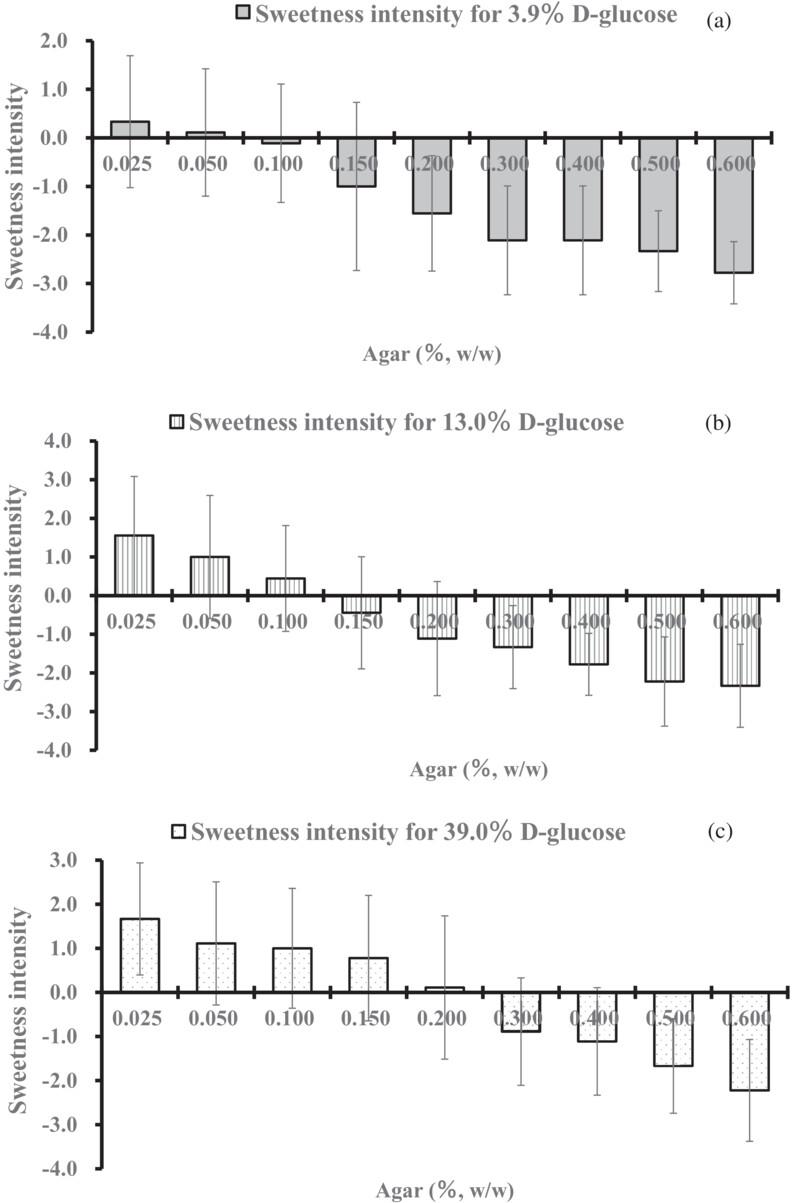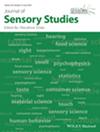We prepared 81 samples of sweetened viscous solutions and gels with agar concentrations ranging from 0.025% to 0.60% and compared their sweetness intensities to reference solutions without agar. Sweetened viscous solutions containing agar showed significantly higher sweetness intensity in six solutions containing D-glucose, three solutions containing sucrose, and four solutions containing D-sorbitol compared to the reference solutions. Notably, some sweetened viscous solutions with extremely low viscosity showed higher sweetness intensity than the reference solution, which is a novel finding. Sweet samples containing agar showed significantly lower sweetness intensity than the reference solution in 15 samples containing D-glucose, 17 samples containing sucrose, and 15 samples containing D-sorbitol, supporting previous theories. We performed a simple regression analysis on the sweetness intensity of viscous solutions and gels containing agar and their physical properties. Our results showed a strong correlation between sweetness intensity and physical properties. These findings suggest that as sweetness intensity decreases, physical properties tend to increase.
To prevent noncommunicable diseases such as diabetes, it is recommended to practice carbohydrate restriction and reduce the consumption of sweet foods. In this study, upon being offered extremely low-viscosity sweetened solutions, we anticipate perceiving a slightly stronger sweetness and an increased sense of satisfaction in contrast to tasting sweetened aqueous solutions without viscosity. These findings hold the potential to provide pioneering insights into the interplay between taste and texture for entities such as food manufacturers. They could facilitate applications designed to elevate the quality of health-conscious food production.




